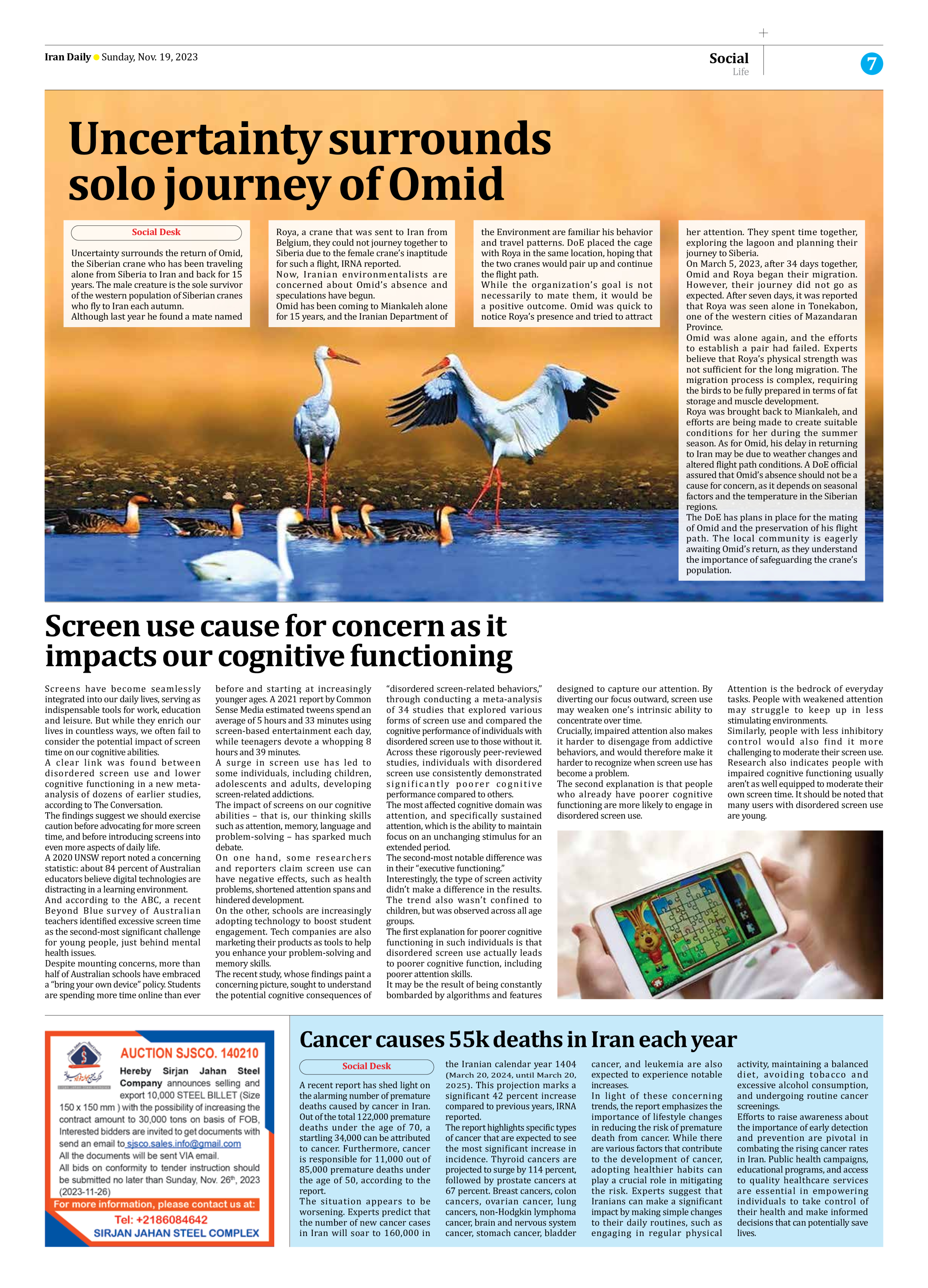
Uncertainty surrounds solo journey of Omid
Uncertainty surrounds the return of Omid, the Siberian crane who has been traveling alone from Siberia to Iran and back for 15 years. The male creature is the sole survivor of the western population of Siberian cranes who fly to Iran each autumn.
Although last year he found a mate named Roya, a crane that was sent to Iran from Belgium, they could not journey together to Siberia due to the female crane’s inaptitude for such a flight, IRNA reported.
Now, Iranian environmentalists are concerned about Omid’s absence and speculations have begun.
Omid has been coming to Miankaleh alone for 15 years, and the Iranian Department of the Environment are familiar his behavior and travel patterns. DoE placed the cage with Roya in the same location, hoping that the two cranes would pair up and continue the flight path.
While the organization’s goal is not necessarily to mate them, it would be a positive outcome. Omid was quick to notice Roya’s presence and tried to attract her attention. They spent time together, exploring the lagoon and planning their journey to Siberia.
On March 5, 2023, after 34 days together, Omid and Roya began their migration. However, their journey did not go as expected. After seven days, it was reported that Roya was seen alone in Tonekabon, one of the western cities of Mazandaran Province.
Omid was alone again, and the efforts to establish a pair had failed. Experts believe that Roya’s physical strength was not sufficient for the long migration. The migration process is complex, requiring the birds to be fully prepared in terms of fat storage and muscle development.
Roya was brought back to Miankaleh, and efforts are being made to create suitable conditions for her during the summer season. As for Omid, his delay in returning to Iran may be due to weather changes and altered flight path conditions. A DoE official assured that Omid’s absence should not be a cause for concern, as it depends on seasonal factors and the temperature in the Siberian regions.
The DoE has plans in place for the mating of Omid and the preservation of his flight path. The local community is eagerly awaiting Omid’s return, as they understand the importance of safeguarding the crane’s population.







